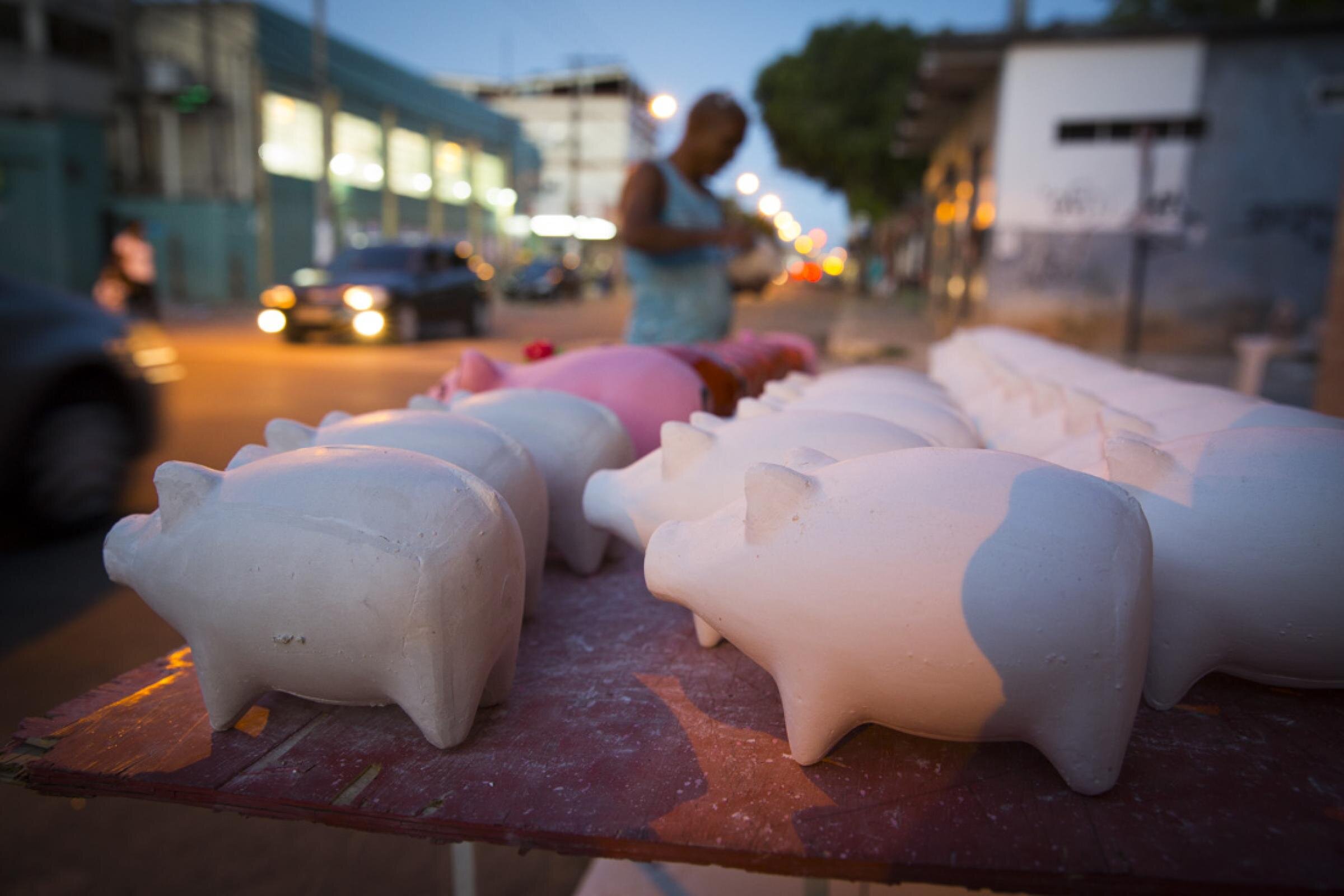
Financial Shock
A World Teetering on the Financial Edge
An Investigative Report By: Chris Tyree, Journalist, Email and Scott Wallace, Journalist, Email
THE VALUE OF DATA
Orb is committed to producing global stories that are relevant to and resonate across our diverse human community.
In order to achieve that, we are advancing a new kind of journalism, one that brings together the insights gleaned from data analysis, the wisdom of the public, and on-the-ground reporting.
Data about how we are living as a global society is now ubiquitous; Orb is designed to use that data to further our understanding of our world and each other. For this transmedia project, “Financial Shock,” we interrogated one of the richest datasets ever compiled about how people around the world manage their money — the Global Financial Inclusion Index database. Or, the Findex for short.
The Findex was first commissioned by the World Bank in 2011. It was designed to support the strategic planning around “financial inclusion” — the concept of expanding “affordable, accessible and appropriate financial services” to the more than two billion people worldwide who currently lack access to a formal financial account.
To build the Findex, the polling company Gallup surveyed 150,000 randomly selected adults (age 15 and older) in 143 countries. Respondents were chosen at random, around 1,000 adults per country, and were asked basic questions about themselves, how they save and borrow money, make and receive payments, and manage financial risk.
The data collected in the Findex spurred the development of the World Bank’s 2015 launch of Universal Financial Access 2020 (UFA2020). This initiative brought together the World Bank and 14 public and private-sector partners focusing on 25 countries. The goal? To bring 73 percent of people who are currently “excluded” into the financial inclusion tent by 2020.
MINING THE DATA
The World Bank’s mission is to lift people from poverty and make them more economically resilient. Expanding financial inclusion is designed to further that goal. At Orb, we were curious about how we might consider the information in the Findex to inform our own reporting on the wide-ranging topic of financial inclusion.
The Findex data is particularly useful for several reasons. It’s global in nature and, hence, includes respondents from a wide range of cultures, faiths, nationalities, developing and developed economies. And, while many global surveys aggregate data at the country level, the Findex provides individual responses, with each respondent anonymously assigned a number. Because of the granular nature of the publicly available data, Orb’s statistical partner, Datassist, had a lot of flexibility with which to analyze this rich data set.
In 2014, the World Bank repeated the 2011 survey and expanded it to include a couple of new questions about how people plan for financial emergencies. As we studied the data, we were continually drawn to this question of how people around the world manage, or fail to manage, financial emergencies.
With this question, Findex respondents were asked if they would be able to find a certain amount of money within 30 days to face a hypothetical emergency. The amount varied from country to country but it always represented 1/20 of the per-capita Gross National Income, or GNI, in local currency. United States citizens, for example, were asked if they could come up with USD$2,600 in 30 days. Norwegians, USD$5,000. Nigerians, USD$20.
Those surveyed could respond with one of four choices: very possible, somewhat possible, not very possible, or not at all possible. They could also say they didn’t know or refuse to answer.
Worldwide, only 31 percent said that it would be very possible to get their nationally adjusted sum within 30 days. Meaning, that for the other 69% — almost two-thirds of the global population — finding emergency funds is tricky at best.
BUILDING OUR OWN ANALYTICAL MODEL
Over the course of several weeks, Orb and Datassist gathered regularly to discuss the data and review Datassist’s analysis. This iterative process provoked further questions, challenging our assumptions about the world and how people manage their money. It also spawned an idea: Could we predict a person’s likelihood of coming up with money in an emergency using the data as the source? The process resulted in a focused journalistic query — how people manage to come up with money in an emergency — and helped us choose the locations for on-the-ground reporting.
To build the predictive model, Datassist selected four of the data points the Gallup pollsters collected on each survey respondent — gender, education level, income level, and financial inclusion — and analyzed which of those factors most highly correlates with the ability to come up with the money in 30 days.
We found that of the people around the world who said it would be “very possible” or “somewhat possible” to come up with the money, only 63 percent have financial accounts. In some of the poorest countries on earth, with the lowest rates of financial inclusion — e.g. Niger, Myanmar, Turkmenistan — more respondents said that they could come up with funds than the richer, financially included countries like Brazil and the United States.
Of the four factors in the model, it turned out that an individual’s education level correlates highest with the ability to find funds in an emergency. The second strongest correlation is income level, followed by whether or not one has an account and, finally, a person’s gender.
As we discussed the results, we found that we’d assumed gender would be a stronger indicator and that being financially included would provide a more potent safety net in emergencies.
As a next step, Datassist took those same four factors — gender, education level, income level, and financial inclusion — and, by aggregating those predictions on an individual level, estimated what proportion of respondents from each country should be able to access emergency money.
Then we compared those estimates with the actual survey results for each country. What was interesting to us wasn’t where we’d accurately estimated a population’s ability to come up with the funds in an emergency but where there were the biggest gaps between our prediction and the actual responses to the Findex pollsters.
USING THE DATA AS A COMPASS
The countries with the biggest gaps between our prediction and the actual responses were the ones where other factors, ones not addressed by the Findex poll, appeared to be most at play. What elements were enabling people to find money in an emergency, or keeping them from it?
We figured that the “outlier” countries would reveal interesting lessons about financial inclusion and how economic resilience really works on the ground. We began doing more research and found references to informal lenders, community banks, a lack of financial literacy programs, and, from the Findex data itself, the key role that friends and family play in financial resilience.
Brazil turned out to be high on our list of outliers. It boasts the seventh-largest economy in the world, has a new middle class that emerged in the course of an unprecedented economic boom in Brazil in the early years of the 21st century, and was the focus of a financial inclusion effort over the last decade. Yet, while 68 percent of Brazilians have access to formal financial services, 63.2 percent of Brazilian respondents told the Gallup surveyors it was “not very possible” or “not at all possible” to find the funds to deal with a financial crisis. What’s going on there?
This large gap led us to the streets and alleyways, the supermarkets and outdoor markets, of Latin America’s most populous and prosperous country. We wanted to hear from the people themselves, to gain an understanding that the survey numbers by themselves could not provide.
At the other end of the spectrum is Myanmar, where only 22.8 percent of the country’s 54 million people have any sort of financial account. Nonetheless, 90.3 percent of respondents in Myanmar said it would be “very possible” or “somewhat possible” to find emergency funds. That is nearly 40 percentage points higher than predicted by Orb’s analytic model. Though the numbers were not quite as dramatic, Cambodia also exhibits a similar trend. Less than one in four Cambodian adults have a bank account. Yet, 69 percent reported they could come up with money in a crisis.
We decided we would go to Myanmar and Cambodia to gain more insight into why in these two countries with low numbers of financial inclusion, so many people are able to find emergency funds.
Through this deep and progressing engagement with the data, Orb has been able to explore a dim corner of the financial inclusion project. The data analysis gave us a lead, while the on-the-ground reporting and critical thinking made it possible to glue together a picture of what’s unfolding on a global scale. We looked deeply into how financial inclusion is working and can now suggest possible avenues of change — things such as more financial education for consumers and proper regulation of banking and credit agencies. To experience the full breadth of our reporting, please head to the Text, Audio, or Multimedia Views of “Financial Shock.”
